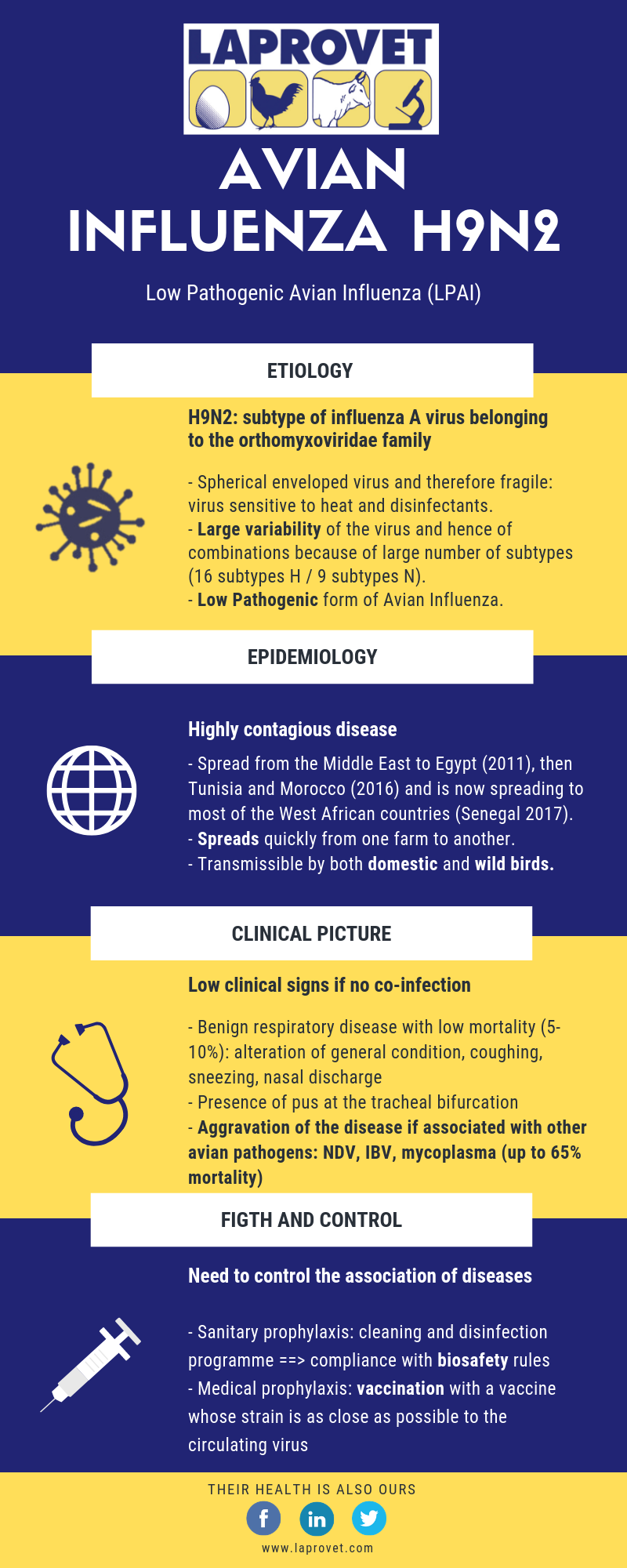
News & medias
LOW PATHOGENIC AVIAN INFLUENZA H9N2

H9N2 virus is a low pathogenic subtype of Avian Influenza. Initially discovered in South-East Asia, it was then identified in the Middle East and Egypt (2011), before migrating to Morocco and Tunisia (2016); it is now continuing its extension to West Africa since it has been identified in several countries in the area since 2017.
It is a highly contagious disease. Wild birds are a natural reservoir of the virus, which can also spread through contaminated dust, water and food, clothing and footwear, or even livestock equipment. In addition, the virus is characterized by its very high variability due to a large number of possible subtype combinations.
While the disease alone manifests itself as a benign respiratory disease with a low mortality rate (5 – 10%), it is much more serious when combined with another respiratory pathology (IB, ND, mycoplasma…) and then generates a very high mortality rate (up to 65%).
The clinical signs of Low Pathogenic Avian Influenza H9N2 being sometimes very discreet, it is not easy to identify the presence of the disease in the farm; so it is all the more important to protect the livestock.
In order to fight the disease, it is necessary to rely on 2 lines:
– Sanitary prophylaxis in order to comply with biosecurity rules
– Medical prophylaxis via appropriate vaccination
The presence of Avian Influenza H9N2 is now a proven situation in the field and, knowing the consequences of this virus in the event of co-infection with a classical pathology, it seems increasingly necessary to integrate it into vaccination programmes when running a farm. In all cases, it is essential to fight against the association of diseases and not just the disease alone.
 English
English  Français
Français